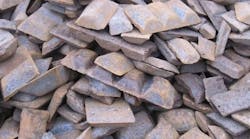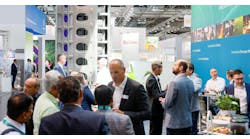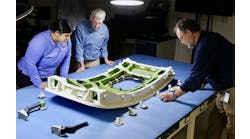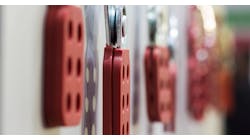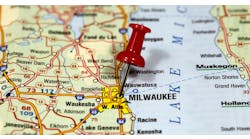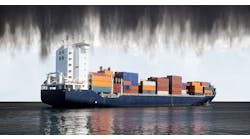One thing led to another in the effort to increase productivity at Midland Manufacturing. George Westhoff, owner and president of the brass and bronze foundry in Ft. Worth, TX, was looking for a way to improve material handling from the molding machine through to the shake-out, shot-blast, and cleaning department.
Westhoff contacted several engineering firms in his search for equipment solutions, but recalls now that of all the proposals he received the best design came from SandMold Systems. The plant, which produces cast parts and components for water, tooling, and other product markets in a wide range of sizes, expects to realize several improvements when this flexible approach is installed later this year.
The Sandmold proposal eliminated bottlenecks from the existing manual handling system with an automated system that allows castings to progress smoothly on a hook-type monorail conveyor running overhead. The monorail starts at the molding station shake-out area where castings are put on a hook or into a basket attached to a chain. Then, they process through a Roberts Sinto SST, four-wheel shot-blasting cabinet machine where they are given an initial blast to eliminate sand.
After blasting, castings continue on through a forced-air chamber for additional cooling. Operators remove the casting trees from the monorail conveyor at the cut-off station, and castings are cut-off and placed on a sorting conveyor belt. Sprue is placed on a return conveyor and the castings are removed from the sorting belt for final grinding. When grinding is complete, they are returned to the sorting belt.
Next, the castings are placed in a box and transferred to a skip loader that automatically enters an existing blast machine for final cleaning. Then, the castings are unloaded onto a sort conveyor for final inspection, sorting, and loading into shipping containers.
SandMold’s new, ergonomic-focused system allows Midland Manufacturing:
- To discontinue manually loading boxes at the shake-out;
- To stop unloading castings by hand from boxes into the primary blast cabinet;
- To end manually unloading castings from the primary blast cabinet to boxes;
- To stop manual unloading of castings from boxes for cut-off;
- To discontinue manually picking castings out of boxes for grinding; and,
- To stop using a fork truck to deliver boxes full of castings to and from each process center.
The prospect of the new material-handling system also brought another need to Westhoff’s attention. Midland Manufacturing needed a new in-line blasting machine to work with the new handling system, and contacted Sinto Surface Treatment — like SandMold, a division of Roberts Sinto Corp. — for the design. SST provides foundries with a range of off-the-shelf and custom blast machines for foundries.
According to Westhoff, “It made sense to keep the project together within one company on a single source basis with one company responsible for the entire project. Plus, they understood the design requirements and the specs for the entire job.
According to Roberts Sinto, “the custom configuration of the four-wheel monorail blast machine for Midland Manufacturing is specially designed and placed to keep production moving fast and to clean the sand off the tree castings before going to the cut-off and grinding departments. This design also worked very efficiently with the automated system and did not require a man to operate the blast machine as it did in the old manual operation.”
SST called the Midland blasting machine “a good example of how we can interact with an overall automated line to solve a customer’s blast-cleaning requirements.”

